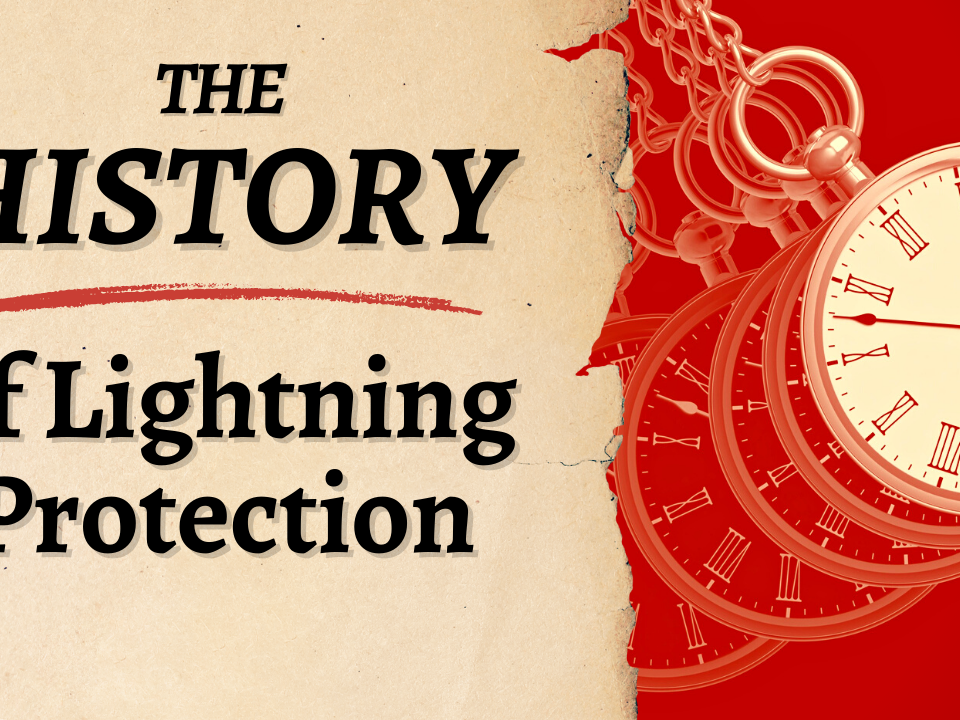- We Prevent Lightning Related Problems.
Lightning: The Risk Less Considered
August 23, 2012Lightning Causes Warehouse Fire, Result: Costly Damages
September 6, 2012Damages Rise when Substations Don’t Invest in Lightning Protection
A lightning strike on a transformer can cause a major lightning damage explosion due to the amount of extra voltage injected into the transformer. Lightning bolts can contain up to 120 million volts – depending on the length and size. When a transformer blows, it can knock out power for hundreds to thousands of people. In addition, collateral damages can occur because any line connected with the blown transformer, is now live and could be carrying thousands of volts. Blown transformers can also set its surroundings on fire, especially in dry environments.
Check out the video below to see an example of what happens when lightning strikes a transformer.
httpv://www.youtube.com/watch?
Just recently in Indiana, a lightning strike destroyed two large industrial transformers owned by Richmond Power & Light. These costly pieces of equipment blew near a manufacturing plant in the early morning hours. It took about 20 hours for the transformers to be replaced. That very short lightning strike costs almost $90,000 in damages – so far. Often times, oil that is found in transformers contains PCBs, a toxic chemical compound. If the transformer oil that saturated the ground is toxic, it is an environmental contaminant that requires special handling and disposal which will end up adding to the already costly lightning damage. Unfortunately, Richmond Power & Light does not incorporate storm repairs in their budget – but instead classified them as regular damages.
Protecting transformers or substations from lightning damage can cost anywhere from $20,000 to $150,000 and more, depending on the size and intricacies of the facility. Some large facilities whose equipment is valued at $7 to $10 Million have spent $150,000 and up to protect their installations. If Richmond Power & Light had invested even the minimum in protecting their transformers against lightning, they would not be spending $90,000 in reparations and their customers would not have suffered the consequences and potential loss of their own due to the outage.
Just like Richmond, Indiana, many small towns do not have much money in their budget to protect against lightning. For example, Cuming County Public Power District (PPD) in Nebraska, who is responsible for distributing power within their county, has had issues with lightning and authorities were specifically worried about their transformers in 12 substations. Cuming County did not have a large budget for this project, but had many different stations that needed protection, so they contacted Lightning Eliminators & Consultants, Inc. (LEC)
Taking this into account, LEC wanted to give Cuming County PPD the best level of protection for their money by determining the best way to protect different locations with that level or resources. LEC guides its clients through the entire process, from initial consulting, which is many times overlooked, and site engineering to installation and system recertification. After careful consideration and consulting, LEC installed its SBI™ (Spline Ball Ionizer™) risk reduction system across 11 different substations. Chem-Rods in various places were installed and used to enhance their grounding protection. The installation was precarious and required dedicated time from both LEC engineers and Cuming County PPD employees. Highly trained and educated LEC engineers took special time to educate Coming County PPD about the system, how it worked, and how to help with the install.
The Spline Ball Ionizer is used to supplement DAS, and for structures that require lightweight protection with a low wind profile. Because of it’s unique design and geometry, the SBI acts as a hybrid ionizer/air terminal, preventing most incoming strikes from virtually any direction and collecting any it cannot prevent, when used as primary protection Like our Dissipation Array System (DAS) the SBI is based on over 25 years of research & development and utilizes similar technology to reduce the risk of direct lightning strikes at the protected site. In its primary mode, the SBI lowers the risk of direct strikes by utilizing a phenomenon known as charge transfer, where a well-grounded point exchanges ions between the air and earth. This ionizing capability helps keep the local electric field below lightning potential, making the protected site less likely to experience direct strikes. Under intense storm conditions, the SBI functions as a highly effective air terminal, safely collecting any strikes it cannot prevent. In contrast to wire brush devices that are often left ineffective after a single strike, the SBI continues to reduce the risk of subsequent strikes.
Lightning Eliminators specializes in providing integrated lightning protection and prevention products, solutions and services by utilizing innovative patented charge transfer technology, grounding systems engineering, surge protection design, and providing comprehensive consulting services based on physics and state of the art engineering principles.

